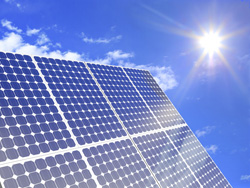Seeing the Sun in a new light
Harnessing the Sun's energy to produce electricity through advanced photovoltaic (PV) technology is a concept on the threshold of widespread market penetration. The leap requires an increase in energy conversion efficiency combined with a decrease in cost. One promising way to enhance efficiency is to increase the absorption spectrum of PV materials so that they include a greater portion of the Sun's spectrum. Currently, absorption bands of the best PV materials cover a range of wavelengths from 400 to 1 200 nanometres (nm), whereas the solar spectrum includes wavelengths in the range from 290 to 3 790 nm. Scientists initiated the EU-funded project 'Smart light collecting system for the efficiency enhancement of solar cells' (EPHOCELL) to investigate the potential of intra- and intermolecular energy transfers supported by a photoluminescent compound. Down-shifting (DS) — the conversion of higher energy light to lower energy — is a relatively well explored process, whereas the practical application of up-conversion (UC) in PV devices remains a challenge. EPHOCELL focused on developing a simple wavelength modulator from innovative UC and DS materials to significantly enhance the efficiency of PV panels. Quantum yield (QY) of a photoluminescent compound is a measure of efficiency. EPHOCELL targeted a QY conversion of at least 85 % for DS and 12 % for UC. Scientists achieved a record high 13 % QY conversion for UC and near target 76 % for DS. Various host materials and converter devices were developed to couple the systems with wafer-based crystalline silicon (Si), amorphous Si (a-Si) and dye-sensitised solar cells. The DS-coupled PV cells demonstrated efficiency enhancements up to 45 % and UC-coupled up to 2 %. Predictions for future 'ideal' UC systems were made based on modelling results, and a cost–benefit analysis enabled preliminary comparisons with the cost of other technologies designed to enhance PV efficiency. EPHOCELL significantly advanced the state of molecular systems for PV modulation toward increased efficiencies. The new technology has prepared the way for widespread market uptake of PV technology.



